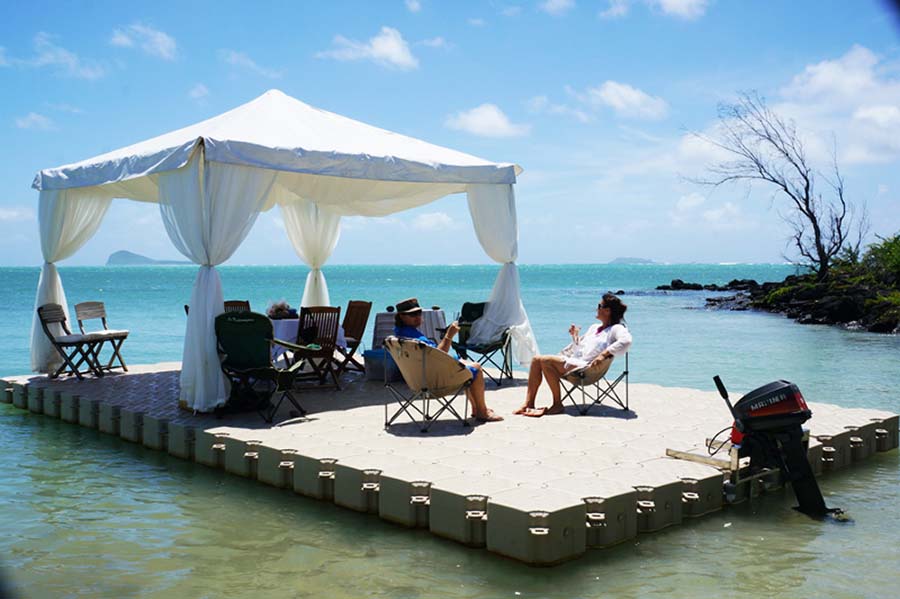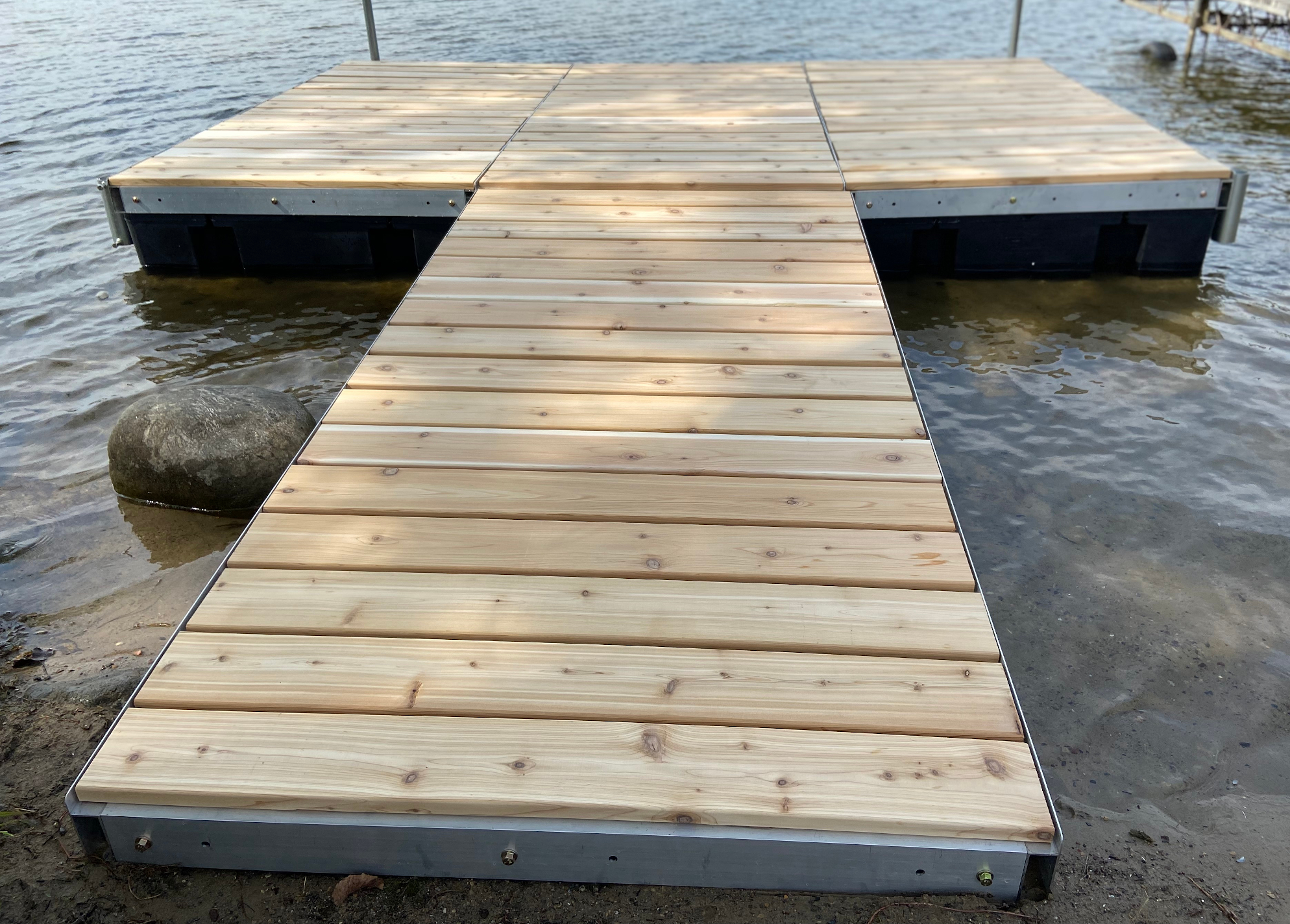Create the Perfect Docking Service With Floating Docks
Floating docks present a functional option for a selection of maritime demands, adapting perfectly to fluctuating water levels and varied vessel kinds. Their modular nature permits rapid installation and relocation, yet the selection of appropriate products and design features is critical for making sure both capability and aesthetic charm. As we check out the vital components that add to the efficiency of floating docks, a number of key variables pertaining to security and upkeep will certainly arise, elevating questions regarding just how to maximize your docking experience. The subsequent conversation will light up these important factors to consider.

Advantages of Floating Docks
Floating docks offer countless advantages that make them an ideal option for various maritime applications. One of the key benefits is their versatility to changing water levels. Unlike taken care of docks, floating docks fluctuate with the tide, making sure constant ease of access for vessels. This feature is especially essential in areas prone to substantial tidal fluctuations or seasonal water level modifications.
Additionally, floating docks are commonly less complicated and quicker to install compared to standard set frameworks. Their modular layout permits uncomplicated assembly and disassembly, helping with maintenance and moving when necessary. This versatility is specifically advantageous for short-term applications or in environments where conditions may change.
Floating docks also have a tendency to be extra eco-friendly, as they minimize disturbance to the seabed and surrounding marine ecological communities. Their buoyant nature lowers the danger of damages to marine life, advertising a healthier atmosphere. These docks can be tailored to fit numerous vessel sizes, ensuring that they satisfy certain functional requirements.
Eventually, the combination of adaptability, simplicity of setup, and ecological factors to consider makes floating docks a very efficient service for a broad range of maritime demands.
Choosing the Right Materials
Selecting the appropriate products for floating docks is crucial to make certain longevity, security, and long life. The option of products directly impacts the dock's performance in different environmental problems, consisting of direct exposure to water, sunshine, and possible wear from aquatic website traffic.
Typical products used for floating docks consist of light weight aluminum, wood, and high-density polyethylene (HDPE) Light weight aluminum is lightweight, corrosion-resistant, and calls for minimal upkeep, making it an exceptional selection for durability. Nevertheless, its preliminary cost can be higher contrasted to various other products.
Timber, while aesthetically attractive and supplying a traditional look, can be vulnerable to rot and pest damage otherwise properly treated. Utilizing pressure-treated wood or normally resilient species like cedar or redwood can alleviate these problems.
HDPE is a preferred selection because of its resistance to UV rays and chemicals, together with being eco friendly. dock company. It is lightweight and available in different colors, permitting customization
Ultimately, the ideal product selection will depend upon specific demands, consisting of budget plan, desired looks, and environmental considerations. Mindful assessment of these variables will cause a resilient and successful floating dock option.
Layout Factors To Consider for Security
When designing floating docks, making sure security is a basic element that can substantially affect their functionality and safety and security. Security in floating dock layout is influenced by different factors, consisting of buoyancy, weight distribution, and the plan of components. An ideal buoyancy system must use products that supply sufficient lift while minimizing weight. This balance guarantees that the dock stays above water, also under differing loads.
Weight circulation is important; uniformly dispersing lots throughout the dock avoids turning and boosts security. This can be accomplished through strategic positioning of docking equipment, such as fenders and cleats, along with appropriate spacing of floats. Furthermore, the measurements of the dock should be attentively intended. Larger designs can supply boosted This Site security, especially in harsh water conditions, while longer docks may require extra supports to avoid drooping.
Another try these out crucial factor to consider is the environmental impact, including wave action and wind. Integrating attributes such as sidewalls or skirting can help alleviate the impacts of ecological pressures, preserving stability in unfavorable problems. Ultimately, a mix of thoughtful layout, product choice, and understanding of environmental variables will certainly yield a drifting dock that meets both stability and safety and security needs.
Installation Tips and Techniques

Next, protect the essential permits and comply with neighborhood guidelines, which may determine setup approaches and environmental factors to consider. If called for, involve a certified contractor experienced in floating dock installments. Use high-quality products developed for aquatic atmospheres to enhance toughness and long life.
When placing the dock, straighten it parallel to the shoreline to promote easy access. Guarantee that the anchoring system is robust, employing cinder block or helical supports to maintain the dock against wind and wave action. It's important to account for seasonal water level variations, consisting of possible ice activity in chillier environments.
During the installment, ascertain the dock's floatation and stability prior to finalizing the anchoring. Routinely examine the installment for any indicators of wear or damages. By following these techniques and tips, you can achieve a protected, functional, and cosmetically pleasing floating dock installation that fulfills your demands.
Maintenance and Care Guidelines
Maintaining and caring for floating docks is vital to lengthening their lifespan and making sure risk-free usage. Regular evaluations ought to be performed to determine any kind of indicators of wear, damage, or aquatic growth. Look for splits, loose fittings, or blemished areas on the moved here dock's surface, as these issues can jeopardize architectural honesty.
Cleaning is essential. Make use of a stress washer to remove algae, barnacles, and debris, which can gather over time. For stubborn development, take into consideration eco pleasant cleaning representatives that won't damage water life.
Furthermore, examine the mooring lines and supports frequently to guarantee they are totally free and safe from corrosion. Change any torn or harmed lines quickly to keep security.
During extreme climate, such as storms or freezing problems, take preventive actions. Protect the dock with extra mooring lines and, if practical, eliminate any detachable elements to stop damages.
Final Thought
Finally, the application of floating docks offers a flexible and effective docking remedy ideal for numerous maritime applications. Their versatility to rising and fall water degrees, incorporated with a modular layout, permits simple customization and relocation. Picking suitable materials enhances both durability and aesthetic allure, while cautious factor to consider of stability makes sure security and long life. With proper installation and routine maintenance, floating docks can supply effective and trusted docking experiences for a wide variety of vessels.
As we check out the crucial aspects that contribute to the performance of floating docks, a number of crucial factors relating to stability and upkeep will certainly emerge, elevating inquiries concerning just how to optimize your docking experience. Unlike fixed docks, floating docks surge and fall with the tide, guaranteeing regular ease of access for vessels.When developing floating docks, guaranteeing security is a fundamental aspect that can significantly impact their performance and security. Stability in floating dock design is affected by different elements, including buoyancy, weight distribution, and the setup of components. Eventually, a mix of thoughtful layout, product option, and understanding of environmental aspects will certainly produce a floating dock that fulfills both stability and security requirements.